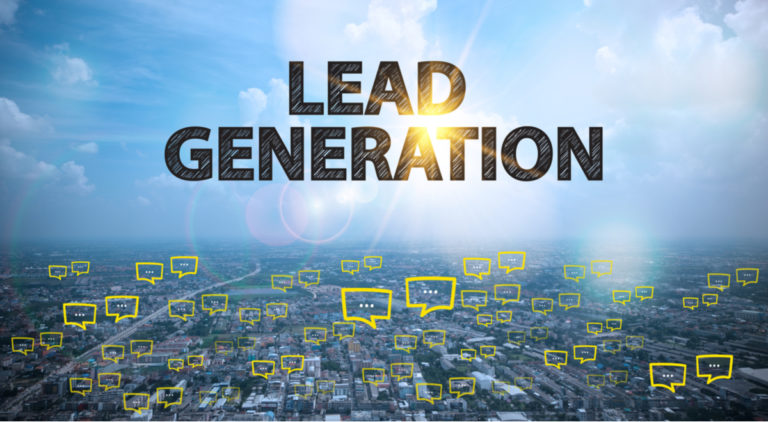Consumer behavior is changing and evolving fast, and you should leverage deep consumer insights to avoid staying behind. For example, as McKinsey reports, about 15% of U.S. consumers ordered grocery delivery for the first time during the COVID-related period.
How can you understand the psychology behind consumer behavior to build an effective marketing and sales strategy for your business? That’s where customer behavior analysis steps in. This article is about predicting customer behavior and analyzing it to increase the chances of your success.
What Is Customer Behavior Analysis?
Consumer behavior studies how customers choose and use products and services based on different emotional, mental, and behavioral responses. So, consumer behavior isn’t about who’s making purchases in your store. Instead, it’s about how customers are shopping in your store.
The assessment of consumer behavior is based on factors like the frequency of purchases and the selection of products. The better you understand these details, the more accurately you will be able to predict your customers’ behavior and communicate with them successfully.

Customer behavior analysis is a qualitative and quantitative investigation of consumers’ behavior with your business. For example, consumers purchasing a candle may want it in a different container. By analyzing consumer behavior data, the company can reveal its customers’ preferences.
In addition, such analysis can reveal a high conversion rate from a particular marketing channel, such as social media. Conversion is about a specific action that website visitors take, such as making a purchase. For example, if the analysis shows a high conversion from your Facebook page, you should focus more attention on this particular channel.
What Can Impact Customer Behavior?
More than one factor affects consumer behavior. So, let’s discover what influences consumers’ buying decisions.
Personality Traits
Personality heavily influences how consumers behave in your store. The Big Five Model is a popular theory regarding personality traits. It states that personality is associated with five core factors, known as CANOE or OCEAN:
- Conscientiousness: acting in an organized or thoughtful way.
- Agreeableness: being compassionate and cooperative toward others.
- Neuroticism: emotional sensitivity.
- Openness: open to trying new or different things.
- Extraversion: seeking stimulation in the company of others.
For example, extraversion is positively related to the variety-seeking tendency (VST) of customers. According to marketing researcher Barbara E. Kahn, this is the tendency of individuals to look for diversity in their choices of services and goods.
Psychological Responses
People’s attitudes and perceptions of reality shape their response to a situation. And these responses can be different from day to day. As a result, your customers may be patient and satisfied one day and impatient the next day, which you should consider while interacting with them.
Social Trends
Family, roles, and status are the main social factors influencing consumer behavior. As a rule, humans tend to imitate other humans and wish to be socially accepted in society. This means one’s buying behavior is affected by others. For example, if black is a trending color in fashion, most people are likely to choose it.
Types of Consumer Behavior
Behavior types are critical when conducting a consumer behavior analysis. By understanding the different buying behaviors, you can more wisely implement the 4Ps of marketing: product, price, place, and promotion. As a result, you can attract a larger number of customers and successfully target their spending needs.
Purchase Behavior
Customers’ purchase behavior is about what your customer is willing to buy. It’s associated with the following:
- Demand: the interest in a product, service, or brand
- Retention: how long a consumer uses a brand
- Recall: how accurately consumers recall their purchase experiences.
Usage Behavior
Usage behavior shows how consumers use your product or service, how often they use it, how much time they spend with it, and what features they’re interested in. This behavior is an indicator of customer loyalty.
Consumer Loyalty
Consumer loyalty shows the extent to which consumers are loyal to your business over time. Customer loyalty is associated with pre-purchase and post-purchase behaviors. The former is about how a consumer decides which product to purchase. The latter shows how a consumer feels about the purchased product.
Specifically, pre-purchase behavior includes gathering information about a product depending on one’s age, gender, education, and the product’s price. An example of post-purchase behavior is when a customer buys a product and then continues to buy the product.
Why Should You Conduct Customer Behavior Analysis?
Analyzing consumers’ behavior can help you anticipate what they need from your product or service and how they use it.

Thus, you’ll be able to enhance your product or service to meet your customers’ needs better. As a result, you can become more appealing to consumers and retain valuable customers.
Personalizing Customer Experience
Consumer behavior analyses allow you to personalize customer experiences, which means you can understand your customer’s unique tastes and preferences and interact with them as individuals.
It allows you to deliver customized messaging, offers, and products or services to each person. A personalized customer experience enables you to develop products or services tailored to your customer’s unique and individual requirements. As a result, you build brand loyalty and increase customer satisfaction, and make consumers remember your business.
Predicting Customer Value
In addition, customer behavior analytics can also help you predict customer lifetime value (CLV). The latter shows the revenue you’ll generate from a customer during their time as a customer.
Today, the machine learning (ML)-based method is considered highly accurate for calculating CLV. This method uses algorithms to find patterns in the data you have on hand to forecast future customer behaviors.
The most commonly used way to calculate CLV is to multiply a customer’s average purchase value, average purchase frequency, and average customer lifespan.
Content Optimization
Your consumer behavior analysis can also help you optimize your marketing campaigns, such as content marketing, email, or social media campaigns. These are strategic activities you use to promote your business’s goals, such as raising awareness of a new product.
By analyzing your consumer behavior data, you can focus on the most valuable customer segment and engage them in their preferred channel through customized content delivered with the most effective timing.
Improving Customer Retention
It’s not only critical to attracting customers but also to retaining them. Your company’s customer retention rate is a metric measuring the number of loyal customers your business retains over a given period.
Personalized messages you use to communicate with your customers encourage them to stay loyal to your brand. And customer behavior analytics enables you to personalize your message for each customer. In addition, you can improve the customer retention rate by delivering outstanding customer support and offering loyalty programs, rewards, and referral bonuses.
How to Conduct a Customer Behavior Analysis
Consumer behavior data lies at the root of your consumer behavior analysis. Data analytics helps more and more businesses predict consumer behavior by analyzing purchases made, search history, or social media profiles.

Here, it’s essential to assemble a customer behavior model. This means creating a mathematical construct to represent the common behaviors you can observe among particular customer groups. As a result, you can forecast how customers will behave under similar conditions.
Step 1: Segment Your Audience
Categorize your target audience. Start by focusing on a range of characteristics. Specifically, use demographic traits such as gender, age, and location. Moreover, include customer engagement data such as web activity and media they consume.
In addition, segment your consumers based on their professional background, where they shop, what social media they use, and how they’ve learned about your product or service.
Step 2: Identify the Key Benefit for Each Segment
For instance, figure out why your customers are buying your product or service rather than the competitors. Maybe they’ve chosen your business out of convenience. In addition, find out how much they want to spend.
Step 3: Allocate Quantitative Data
Start with data on blog subscriptions, social media insights, and product usage. Secondary data regarding consumer reviews and competitor analytics is also essential.
Don’t forget about third-party data. It provides general statistics within the given industry. Finally, consider marketing analytics data, including data from paid and organic channels, such as Google Ads and blogging, respectively. Marketing analytics will help you understand what drives consumer actions, refine your marketing campaigns, and optimize your return on investment (ROI). Depending on the size of your customer base, you might want to implement business intelligence automation technology to optimize the process.
Step 4: Compare Your Quantitative and Qualitative Data
Look at your customer journey map. It incorporates the steps your customers go through while engaging with your brand. For instance, find out which buyer bought what product, as well as when and where the product was purchased.
In addition, see which segment of your customer base is buying from you. Also, look at your repeat shoppers. Finally, find out which marketing channel works best for each segment.
Step 5: Apply Your Analysis to a Campaign
It’s essential to understand your buyers’ wants and needs to avoid losing profit and customers. For this, you need to analyze consumer behavior to create a more effective marketing campaign.
For example, too much advertising can turn off customers. Thus, your findings can help you decide on the correct launch date for your ad campaign. Moreover, you can understand how many ads you should create and how much you need to spend on a campaign.
Step 6: Analyze the Results
You should analyze the results to understand how customers react to your marketing campaign. In addition, you’ll be able to identify problems associated with each campaign and formulate an effective solution to these problems.
For example, marketers often focus too much on the product and not on the customer, so the campaign message becomes unclear to customers. The solution to this problem is to highlight the product benefits, not its features.
When analyzing the results, focus on metrics like conversion rate and customer lifetime value. As a result, you can determine the effectiveness of your campaigns. Importantly, apply a continuous analysis of your results since industries and technologies are constantly changing and evolving, thus influencing customer needs.
Best Tools to Use for Customer Behavior Analysis
To conduct a buyer behavior analysis, you can use various tools. As a result, you’ll reveal what your customers want and how they use your products or services.
As a rule, companies use customer relationship management (CRM) software to gather and compile information to conduct a customer analysis. CRM software collects information related to customer engagement to make it easier to understand, digest, and access this information. For example, CRM software reflects website, social media, and email traffic and eliminates the need to enter data manually.
Here are some of the best tools you can use to perform a consumer behavior analysis:
- Google Analytics
Google Analytics doesn’t only provide user demographic data, but it also gives a quick picture of customer interaction with your website. Importantly, Google Analytics allows you to monitor and manage consumer behavior across various channels. Also, it delivers quick and comprehensive reporting.
For example, you can see the bounce rate of a product on your website. It shows the percentage of visitors leaving a web page without taking action. Logically, a high bounce rate isn’t a good indicator. It means a high percentage of visitors are leaving your web page without taking action.
- HubSpot’s Analytics Platform
Thanks to HubSpot’s reports and CRM features, you can reveal customer characteristics and interaction activity. In addition, HubSpot provides reporting tools so you can view web traffic and build lists based on customer engagement history.
- Hotjar
Hotjar is another tool to analyze what customers are doing on your website. It also provides visitor surveying and polling options to understand your customers better. Compared to Google Analytics, Hotjar delivers a more user-centric approach.
- Trifacta
With Trifacta, you can create an automated visual representation to identify customer behavior trends easily. In addition, it helps evaluate data and make predictions and suggestions, enabling you to improve your customer experience.
- Vertica
With the help of Vertica, you can process high-volume data coming from various channels. This tool allows you to upload a large amount of data on your customers quickly. Moreover, you can connect this tool to Google and Microsoft cloud servers to store all data in one location.
Sum Up
A customer behavior analysis lets you thoroughly investigate how consumers interact with your company. It enables you to look at every step in your customer journey and collect data for analysis. As a result, you gain insight into what your customers love about your company and what you need to improve.


